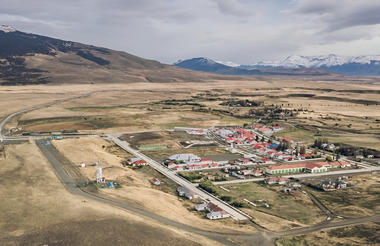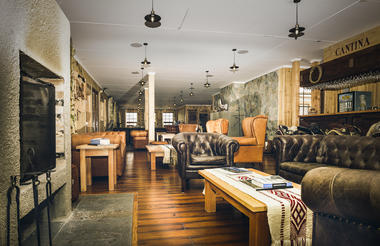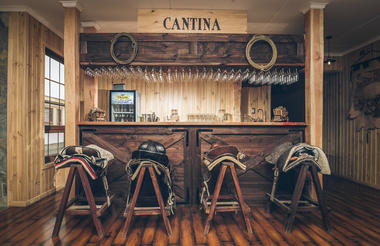General information:
Our photo safari will be focused on spending time with pumas (Puma concolor), also known as mountain lions or cougars. The puma is the fourth largest big cat, after tiger, lion and jaguar. Traditionally, pumas are extremely shy and very hard to observe in the wild, but a unique scenario has developed in and around the Torres del Paine National Park whereby some individual cats amongst a healthy population have become tolerant of respectful human observers. Within the boundaries of the park, it's not permitted to walk off the trails nor drive a vehicle off the roads so the sightings of pumas in the park are not very common, nor easy to photograph.
Fortunately, there is another option which makes it possible for us to locate pumas more often and more reliably, and also get closer to them, in the form of a privately owned ranch of 6000 hectares that joins right onto the eastern edge of the Torres Del Paine National Park. The pumas that live in the park and on the ranch are free to move between the two areas and they do so all the time. The local guides and trackers have developed skills that enable them to locate the big cats effectively. To give an idea, during our 4 days of puma outings, we saw 16 individual cats, and photographed about half of those from reasonable distances. One mother puma with 4 youngsters did count strongly in that number. Typically we make use of our closed, four-wheel drive vehicles to drive us near as we can to the cats general vicinity, on the road or dirt track that is nearest. The guide and tracker will decide on the best route for us to make the final approach to the puma on foot. On the ranch property we are permitted to walk anywhere we need to and are not restricted to existing trails. The cats are habituated to various degrees, to people walking and this also allows us good photographic freedom.
How far we get we may get to walk on these approaches depends on how close the cats are to the nearest road. It can also depend on whether the cat we are with is moving or if it is stationery. A puma on the move may also offer us good viewing if we follow along. There are some hillsides and moderate slopes that we might have to traverse for some of the sightings. To be overly prepared, a maximum of 5 kilometres per day of walking would be a maximum estimation of the fitness level required. Fortunately the area is low-lying, so there is are no high altitude conditions to deal with. The highest hilltops that we climbed might be 1300m above sea-level, and the lowest around 300m. For those who wish to minimize the distance walked, it will be possible to make the first approach to a sighting and once the cats go to sleep or start moving along, make their way back to the vehicle. We will have two vehicles for our group of 4 photographers plus Helena and myself, so the option will always be there to break a away from a sighting and to wait in the vehicle or to drive around looking for other opportunities with one vehicle.
Typically we make early morning and late afternoon outings with a midday break. The quality of light is highly variable at this latitude (approximately 50 degrees South), so its quite normal to experience a wide range during a day's photography, from cloudy periods to bright sunshine. It can also be windy and quite chilly, but it doesn’t get down to freezing too often in September and the atmospheric conditions can add to the photographic ambience. If it rains or becomes too windy we are always able to return to the comfort of the vehicle.
The best sightings of the puma usually happen with smaller groups, and our group size will be limited to just 4 guests total per trip. We will have two vehicles for our group, so will be well equipped for following the cats or spending time with them, as long as is possible, during a morning or afternoon outing, as well as having our second vehicle available to be used for game driving/viewing for other nature photography opportunities of birds, the few other mammals and the stunning scenery that is found in this area.
Pumas are the mammals we expect to photograph mostly, along with guanacos, hares, and the South American grey fox. Around thirty bird species can be quite well observed during our drives and walks around ranch and park, including some raptors like the Black-chested Buzzard Eagle and Andean Condor.
On the afternoon during our transfer day, back to Punta Arenas, we will visit a roosting site for Andean Condors and get to photograph them as they come in to land. Approximately twenty birds make use of the location we will visit.
The trip structure is as follows:
- Arrive in Punta Arenas, southern Chile, in time for dinner on first night.
- After breakfast we depart for our drive in a closed vehicle to our lodge in Torres Del Paine, and our hotel.
- Six full days of puma tracking which incorporates a morning outing and an afternoon outing. We typically leave before sunrise in the morning and return for lunch. A late afternoon outing usually happens sometime between 15h00 and 16h00 returning just after sunset. On the second trip we will also move between accommodation in the midday.
- One full day spend in Torres Del Paine National Park with two vehicles, exploring the park and its various scenic hotspots and general nature, including birdlife.
- Drive from Torres Del Paine back to Punta Arenas with an afternoon stop at a site to photograph Andean Condors flying in to a known roost.
- Overnight in Punta Arenas
Focal lengths and camera gear:
We found that focal lengths ranging from 300mm up to 600mm where most effective. Over the course of the puma outings, we might expect to use the longest focal lengths when a single cat was being photographed at a distance. Typical shooting distance would depend upon the tolerance of the individual cat being viewed, but might be 25-50 metres. As always we will seek to create opportunities to get closer than this, but perhaps only for short periods when the circumstances where especially favourable, such as might happen when a very relaxed cat might pass by of its own accord.
It's also a trip where a wide angle lens will be valuable for some of the fantastic landscape opportunities, so the focal lengths from 14mm to 200mm will be used a lot.
Many photographers make use of tripods both for taking pictures of the puma and also for the general landscape images.
|
day 0 |
Hotel Cabo de Hornos | Punta Arenas |
1 night |
B&B |
|
day 1 |
Hotel Ovejero Patagónico | Torres del Paine |
8 nights |
FB+ |
|
day 9 |
Hotel Cabo de Hornos | Punta Arenas |
1 night |
B&B |
|
B&B: Bed and Breakfast |
FB+: Full Board Plus - Dinner, Bed, Breakfast, Lunch and Activities |





11 Days / 10 Nights
Group Size: 4 clients and 2 photographic guides
Special Interests: Puma photography, Bird photography, Patagonia, Wildlife photography, landscape photography
- US$12 100 per person sharing
- US$1 200 single supplement
- 2 single spots available
Includes:
- All accommodations from night 1 to night 10
- All meals from breakfast on day 2 to lunch on day 10 (breakfast included on day 11)
- All vehicles and fuel for the entire trip
- Visit to Olga Teresa condor roost
- 1 Puma tracker
- 2 guides/tracker/drivers
- All day fees for puma tracking and 1 day of entry to Torres del Paine
Excludes:
- International flights
- Transfer from airport to Rey Don Felipe (hotel in Punta Arenas) on Day 1 (we can arrange this for you and you pay in cash)
- Transfer from Rey Don Felipe to airport in Punta Arenas on Day 10 (we can arrange this for you and you pay in cash)
- Drinks on trip (both alcoholic and non-alcoholic)
- Gratuities for puma guides and tracker, hotel and lodge staff
- Phone bills
- Curio purchases or any other purchases of a personal nature








